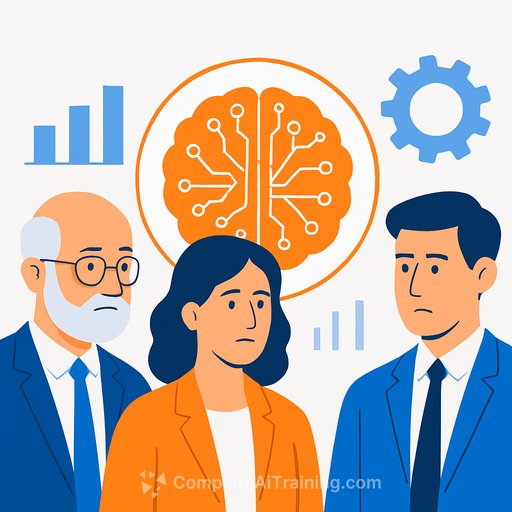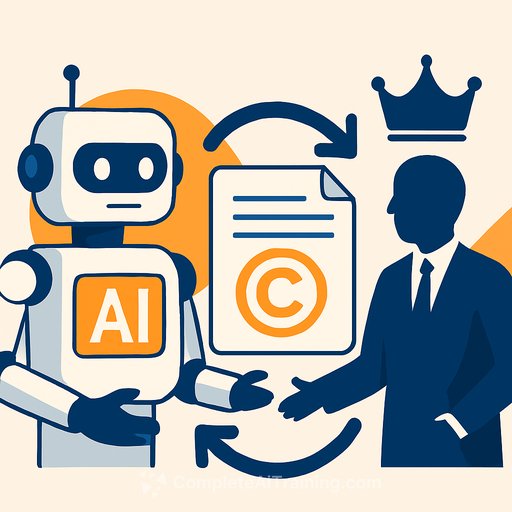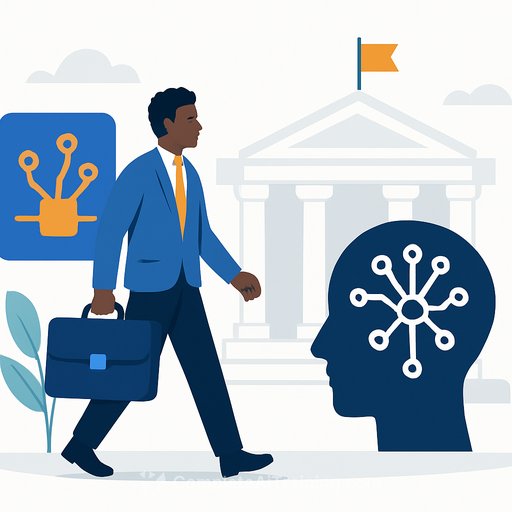Can Wise Heads Fix the Hard Problem of AI Policy?
AI will reshape the economy, but the direction and scale remain uncertain. It could lift productivity and create new roles, or trigger job losses and social disruption. That uncertainty is the policy problem. Government needs a low-cost way to see around corners, act early, and avoid capture by vested interests.
Right now, policy is being pulled in every direction: companies pushing for subsidies, creators pushing for stronger rights, some economists pushing for open access, and unions pushing for a pause. Meanwhile, private money is flooding into data centers and model development. If it's a bubble, it's mostly private risk - but the energy footprint and infrastructure impacts are public concerns. The business case may be unproven, yet the externalities are real.
The Real Risk: Unknowns That Don't Wait
We've been here before. Social media delivered benefits - and significant harm - while regulation lagged by years. AI could be larger in scale, especially if agentic systems become the main interface to services, if disinformation expands, or if chatbots erode human-facing work.
Predictions are unreliable. Some evidence shows AI can increase demand for skilled roles (for example, radiology saw growth rather than decline). Others with deep technical exposure expect major white-collar displacement and market shocks. Both could be true in different sectors and timelines. That's why a risk-based approach is essential.
A Practical Move: Establish a "Wise Heads" Advisory Panel
Create a small, independent panel with a clear brief: horizon-scan AI's economic, social, and infrastructure impacts; provide early warnings; and trigger targeted work by the public service when needed. Keep it nimble, apolitical, and hard to capture.
- Composition: Economists, system engineers, AI researchers, grid/energy experts, investors with infrastructure insight, and regulatory lawyers. Source talent domestically and internationally.
- Mandate: Identify emerging risks and inflection points; publish brief quarterly notes; recommend scoped inquiries to departments when thresholds are met.
- Cost: A few million dollars per year - modest for an early-warning system with whole-of-economy reach.
What Government Can Do Now (No New Laws Required)
- Create a national AI risk register. Track sector exposure, model failure modes, labor displacement risk, concentration risk in compute, supply chain pressures, and civil contingency risks.
- Stand up cross-agency scenarios and stress tests. Model shocks: mass professional displacement, large-scale deepfakes during an election, model outages, or sudden spikes in energy demand from data centers.
- Set early-warning indicators. Monitor job vacancy shifts in high-skill services, error/incident rates in AI-enabled workflows, cloud/compute price changes, data center electricity and water usage, and content/IP disputes.
- Link AI growth to energy and grid planning. Data centers are energy-intensive; plan for location, grid capacity, and demand response. The IEA's guidance is a solid baseline.
- Adopt procurement guardrails. Require vendors to align with recognized risk frameworks (for example, the NIST AI RMF), provide model cards, incident reporting, and content provenance where feasible.
- Protect creators and data owners while enabling innovation. Move beyond all-or-nothing debates. Pilot licensing, collective bargaining models, and transparency on training data sources.
- Invest in public service capability. Build AI literacy, red-teaming skills, and contract oversight. For practical upskilling by role, see Complete AI Training: Courses by Job.
- Use sandboxes. Run time-bound trials in high-impact areas (health, justice, benefits) with strict evaluation, audit logs, and a shutdown switch.
- Strengthen civic resilience. Prepare counter-disinformation playbooks, watermarking/provenance pilots, and public communications protocols for AI-driven incidents.
- Guard against capture. Publish panel memberships, conflict disclosures, and meeting summaries. Rotate members and set term limits.
How the "Wise Heads" Panel Would Work With the APS
- 90 days: Appoint members, define indicators, and release an initial watchlist of risks and data gaps.
- Quarterly: Issue short notes with clear signals: what's changing, why it matters, recommended departmental actions.
- Trigger mechanism: When a threshold is crossed (for example, sustained surge in compute demand or evidence of sectoral job shocks), the panel requests a focused APS inquiry with timelines and accountability.
- Coordination: Tie into central agencies, energy planners, competition and consumer regulators, cyber, and election integrity bodies.
Why This Is Worth It
Regulating after the fact is costly. Social media taught that lesson. A small, expert early-warning system - paired with concrete risk tools inside departments - is a low-cost hedge against larger social, economic, and infrastructure damage.
AI may boost productivity. It may also strain the grid, distort labor markets, and flood information systems. Government's job is to be ready for both. A wise-heads panel plus a risk playbook gives you that readiness without overcommitting to any single bet on the future.
Your membership also unlocks:






